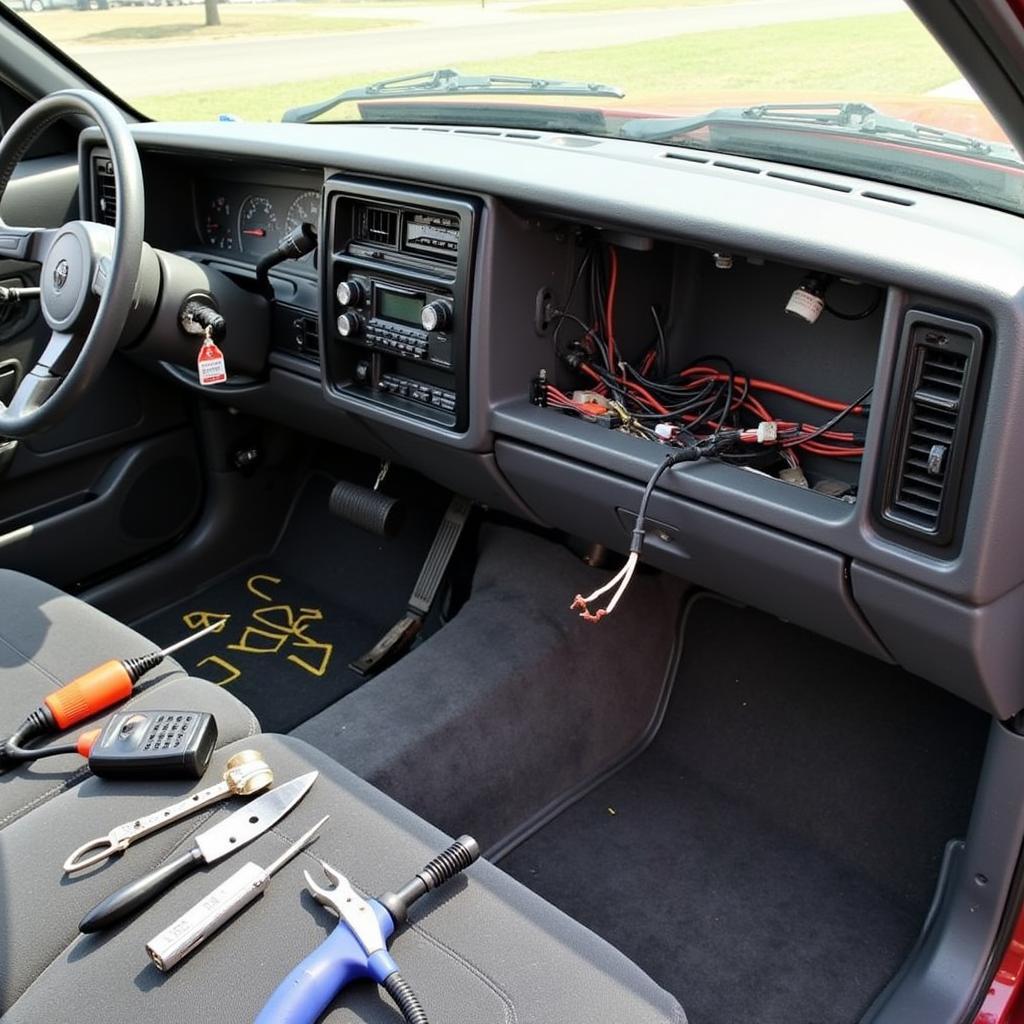Installing a CB radio in your car can significantly enhance communication, especially for road trips, off-road adventures, or coordinating with a group of drivers. This guide provides a step-by-step approach to installing your CB radio, ensuring optimal performance and a clean, professional look.
Choosing the Right CB Radio and Accessories
Before diving into the installation, selecting the right CB radio and accessories is crucial. Consider factors like transmission power, channel availability, and features such as noise cancellation and weather alerts. Choosing a quality antenna and appropriate mounting hardware will also impact your radio’s performance. Don’t skimp on the coaxial cable either, as a high-quality cable minimizes signal loss. Think of it like choosing the right tires for your car – the right components will give you a smoother, more reliable ride.
 CB Radio and Accessories
CB Radio and Accessories
Preparing Your Car for the Installation
Once you’ve gathered your equipment, prepare your vehicle. Choose a suitable location for the CB radio, considering accessibility and visibility while driving. Common locations include the dashboard, center console, or under the dash. You’ll need to ensure you have access to a 12V power source, often found in the fuse box or cigarette lighter socket. Gather your tools, including wire strippers, crimpers, a drill (if necessary), and zip ties for cable management. Just like preparing for a road trip, having everything you need beforehand will save you time and headaches.
 Car Interior Prepared for CB Installation
Car Interior Prepared for CB Installation
Installing the CB Radio: A Step-by-Step Guide
- Powering the Radio: Connect the positive (red) wire of the CB radio’s power cable to a 12V power source. Fuse the connection appropriately to protect your radio and vehicle’s electrical system. Connect the negative (black) wire to a ground point, such as a metal part of the car’s chassis.
- Connecting the Antenna: Attach the coaxial cable to the antenna and the CB radio’s antenna connector. Ensure the connection is secure to minimize signal loss. Route the coaxial cable carefully, avoiding sharp bends and potential interference sources.
- Mounting the Radio: Secure the CB radio to the chosen location using the provided mounting bracket. Ensure it’s firmly attached and doesn’t obstruct driving visibility or access to other controls.
- Cable Management: Bundle and secure any excess wiring using zip ties to create a clean and organized installation. This also prevents wires from tangling or interfering with other vehicle components.
Tuning and Testing Your CB Radio
After completing the installation, it’s time to tune and test your CB radio. Turn on the radio and select channel 19, the designated trucker’s channel. Adjust the squelch control to minimize background noise while still allowing incoming transmissions to be heard. If you hear clear transmissions, congratulations! You’ve successfully installed your CB radio.
 CB Radio Installed and Tuned
CB Radio Installed and Tuned
Conclusion
Installing a CB radio in your car provides a reliable communication tool, especially in situations where cell phone service is limited. By following this guide, you can enjoy clear communication on the road, whether you’re on a cross-country trip or coordinating with a convoy of vehicles. Remember to always adhere to CB radio regulations and etiquette for a safe and enjoyable experience.
FAQs
- What is the best location to install a CB radio in a car? The best location depends on your vehicle and personal preference, but common locations include the dashboard, center console, or under the dash.
- Do I need a special license to operate a CB radio? No, a license is not required to operate a CB radio in the United States.
- How do I choose the right CB antenna? Antenna selection depends on your mounting options and desired performance. Consult with a CB radio specialist for personalized recommendations.
- What is the range of a typical CB radio? CB radio range varies depending on terrain and atmospheric conditions, but typically ranges from a few miles to up to 20 miles.
- How do I troubleshoot common CB radio problems? Common problems include poor reception, excessive noise, and no transmission. Check connections, antenna placement, and power supply for potential issues.
- What is channel 9 used for on a CB radio? Channel 9 is reserved for emergency communications and traveler assistance.
- Are there any regulations I need to be aware of when using a CB radio? Yes, there are regulations regarding power output, antenna height, and prohibited transmissions. Familiarize yourself with these regulations before operating a CB radio.

